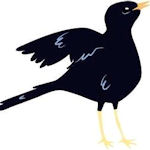A place to discuss everything related to Newton Dynamics.
Moderators: Sascha Willems, walaber
 by blackbird_dream » Thu Nov 14, 2024 4:55 pm
by blackbird_dream » Thu Nov 14, 2024 4:55 pm
I'd like to control torques in joints, assuming that each torque is the summation of several torques (lets say an accumulator).
Currently I'm doing :
- Code: Select all
ctorque = body1->GetTorque() +torqueval1;
body1->SetTorque(ctorque);
ctorque = body1->GetTorque() +torqueval2;
body1->SetTorque(ctorque);
etc
ctorque = body2->GetTorque() -torqueval1;
body2->SetTorque(ctorque);
ctorque = body2->GetTorque() -torqueval2;
body2->SetTorque(ctorque);
etc
where body1 and body2 are respectively parent and child of a given joint.
Is it correc t?
Thks beforehand.
-

blackbird_dream
-
- Posts: 379
- Joined: Wed Jun 07, 2006 3:08 pm
- Location: France
 by Julio Jerez » Thu Nov 14, 2024 6:36 pm
by Julio Jerez » Thu Nov 14, 2024 6:36 pm
that should work.
-
Julio Jerez
- Moderator

-
- Posts: 12483
- Joined: Sun Sep 14, 2003 2:18 pm
- Location: Los Angeles
-
 by blackbird_dream » Fri Nov 15, 2024 2:53 am
by blackbird_dream » Fri Nov 15, 2024 2:53 am
great thks.
I forgot to say, Irrespective of the joint being implemented with a spring damper (SetAsSpringDamper)?
and my code sample was equivalent to :
- Code: Select all
ctorque = body1->GetTorque() +torqueval1+torqueval2;
body1->SetTorque(ctorque);
etc
naturally
-

blackbird_dream
-
- Posts: 379
- Joined: Wed Jun 07, 2006 3:08 pm
- Location: France
 by Julio Jerez » Fri Nov 15, 2024 3:31 am
by Julio Jerez » Fri Nov 15, 2024 3:31 am
Yes, it is analogous to gravity.
It act on all bodies, even the one connected by active joints.
-
Julio Jerez
- Moderator

-
- Posts: 12483
- Joined: Sun Sep 14, 2003 2:18 pm
- Location: Los Angeles
-
Return to General Discussion
Who is online
Users browsing this forum: No registered users and 1 guest

